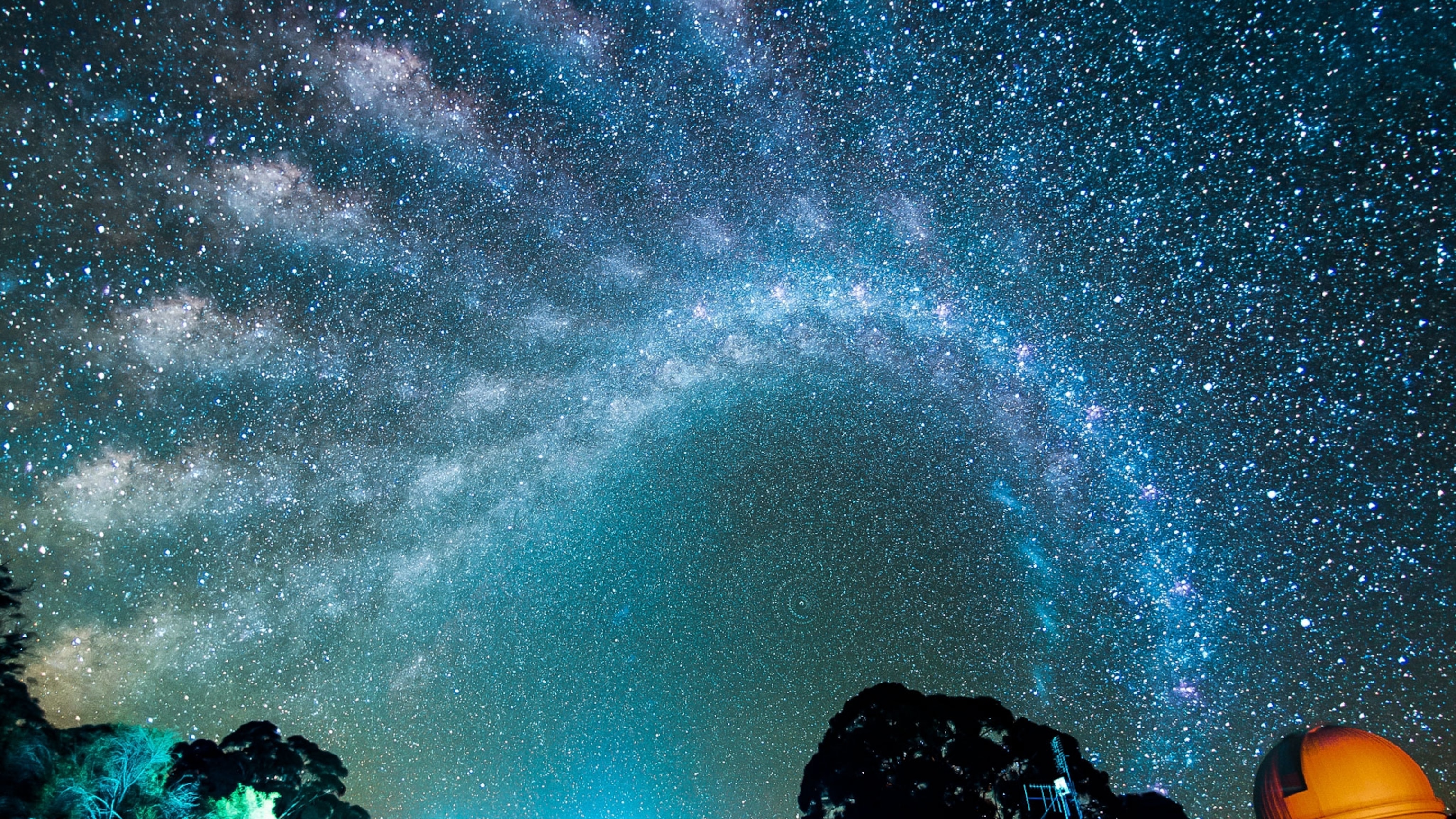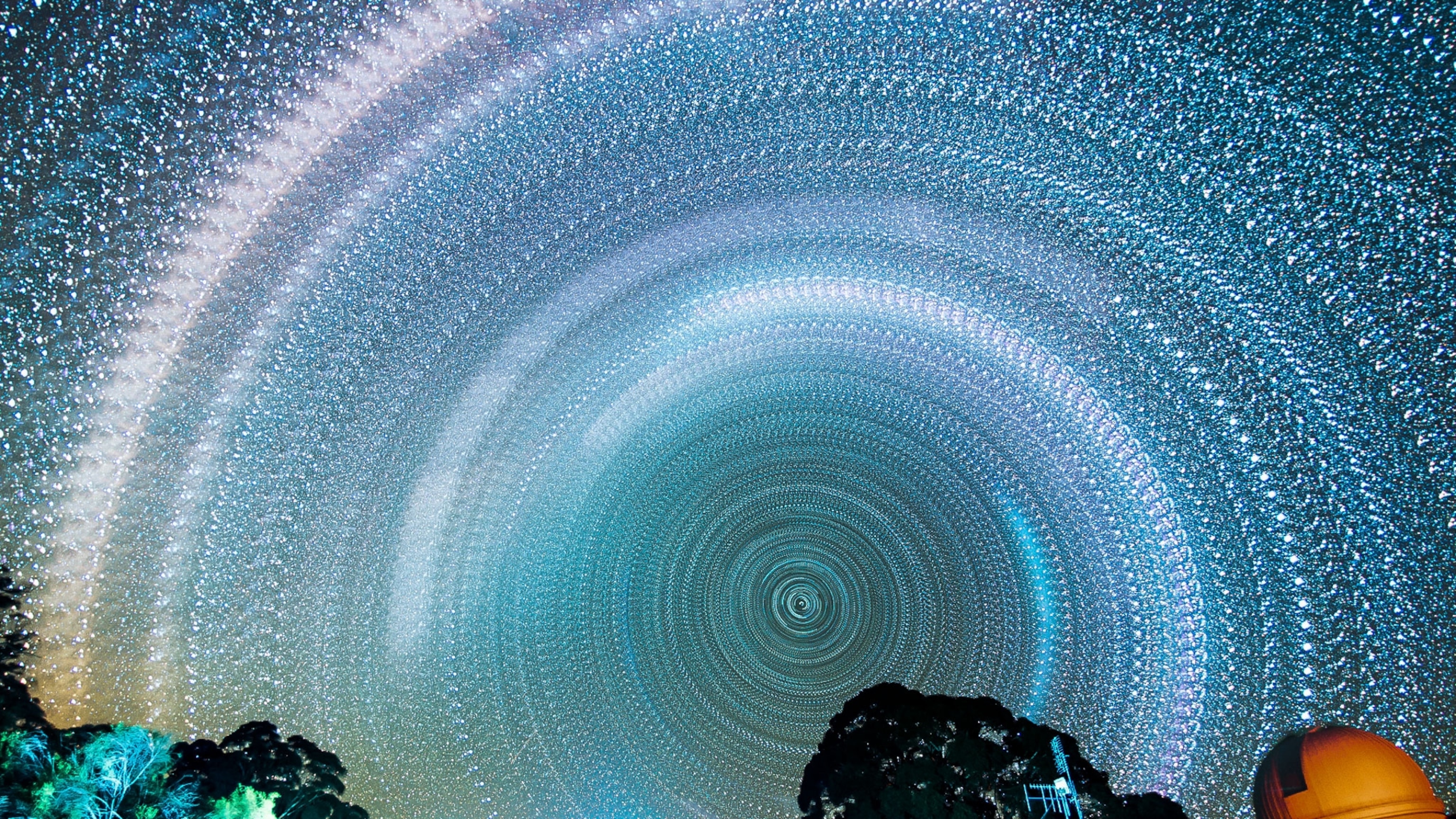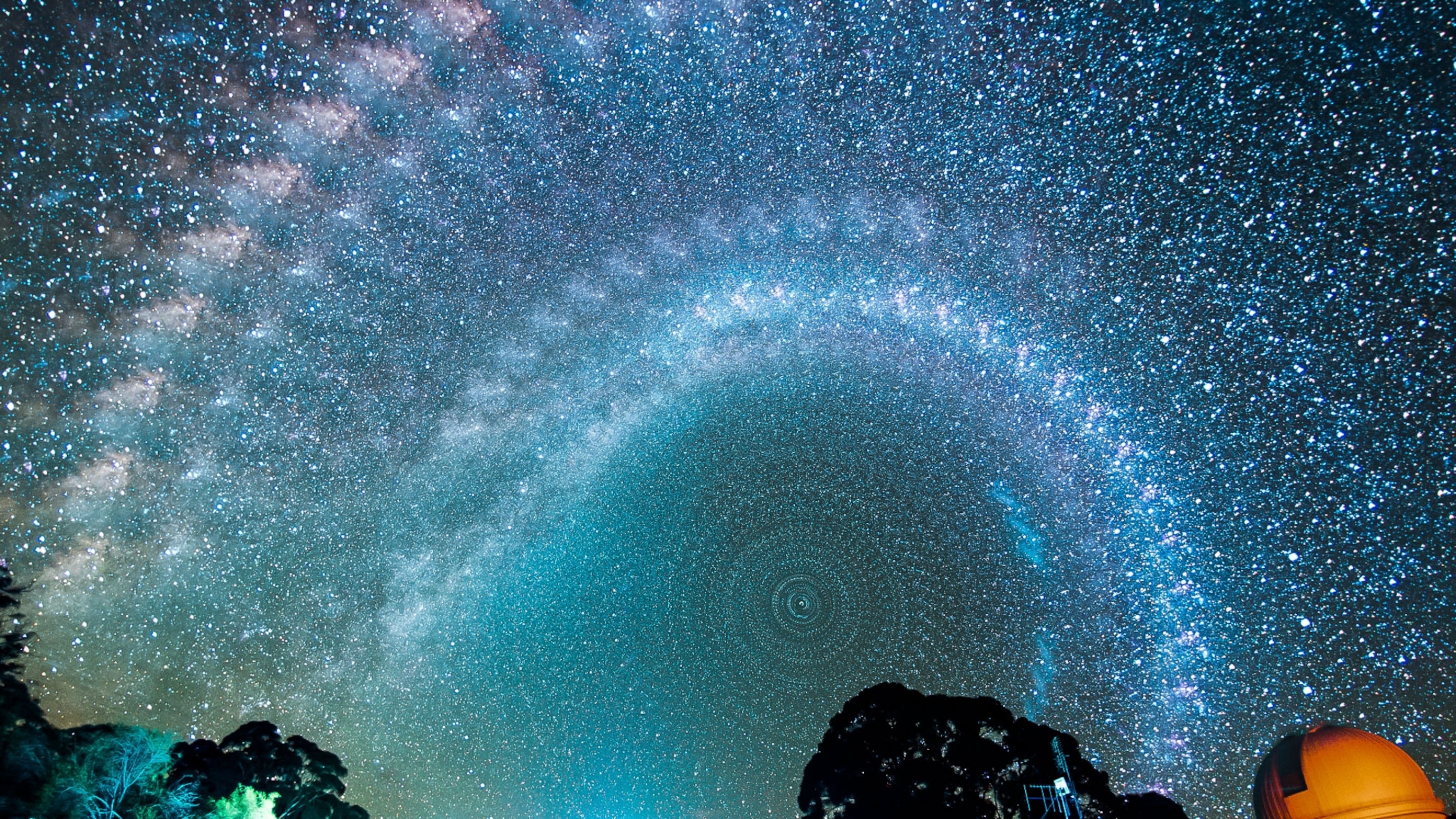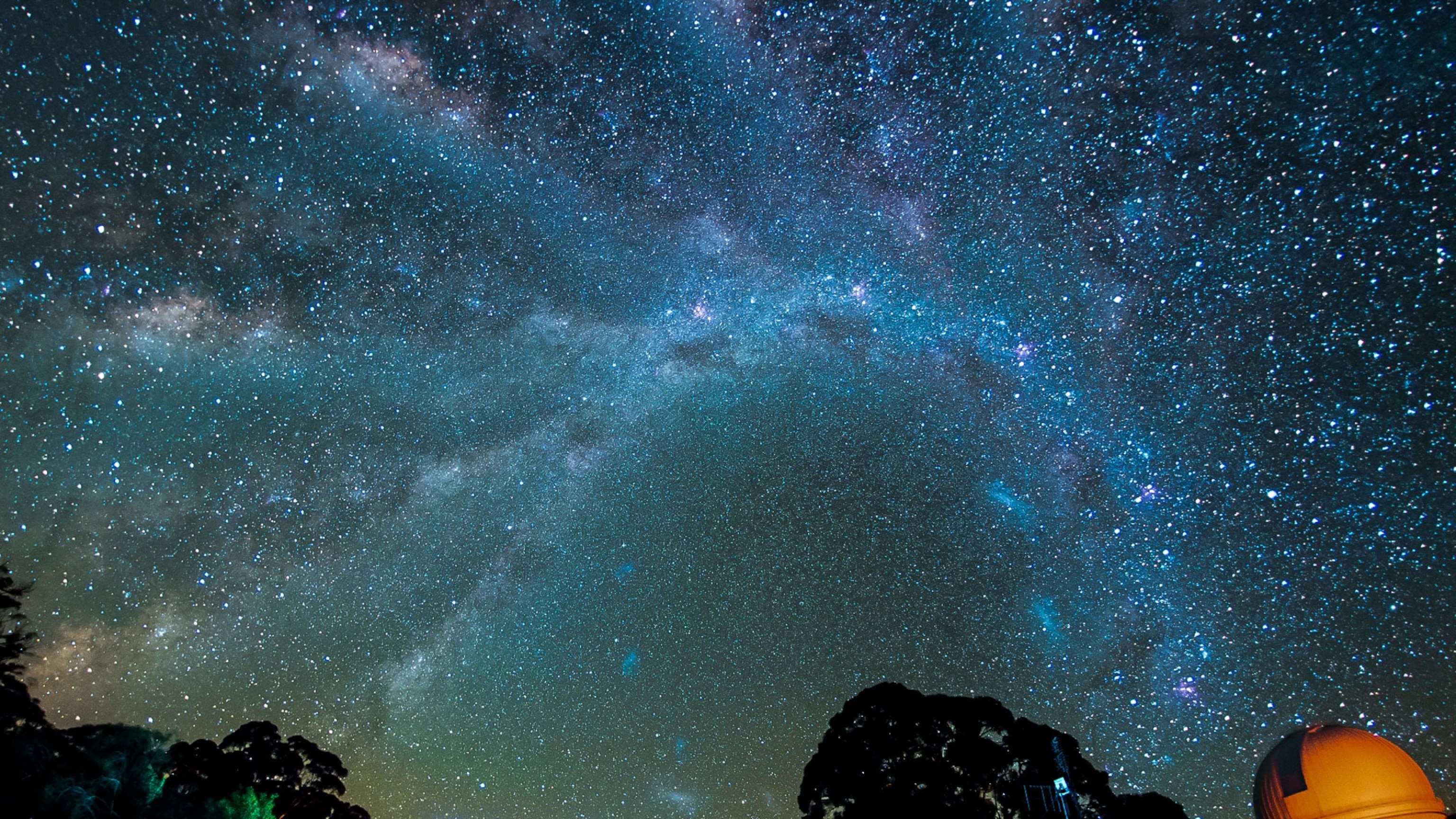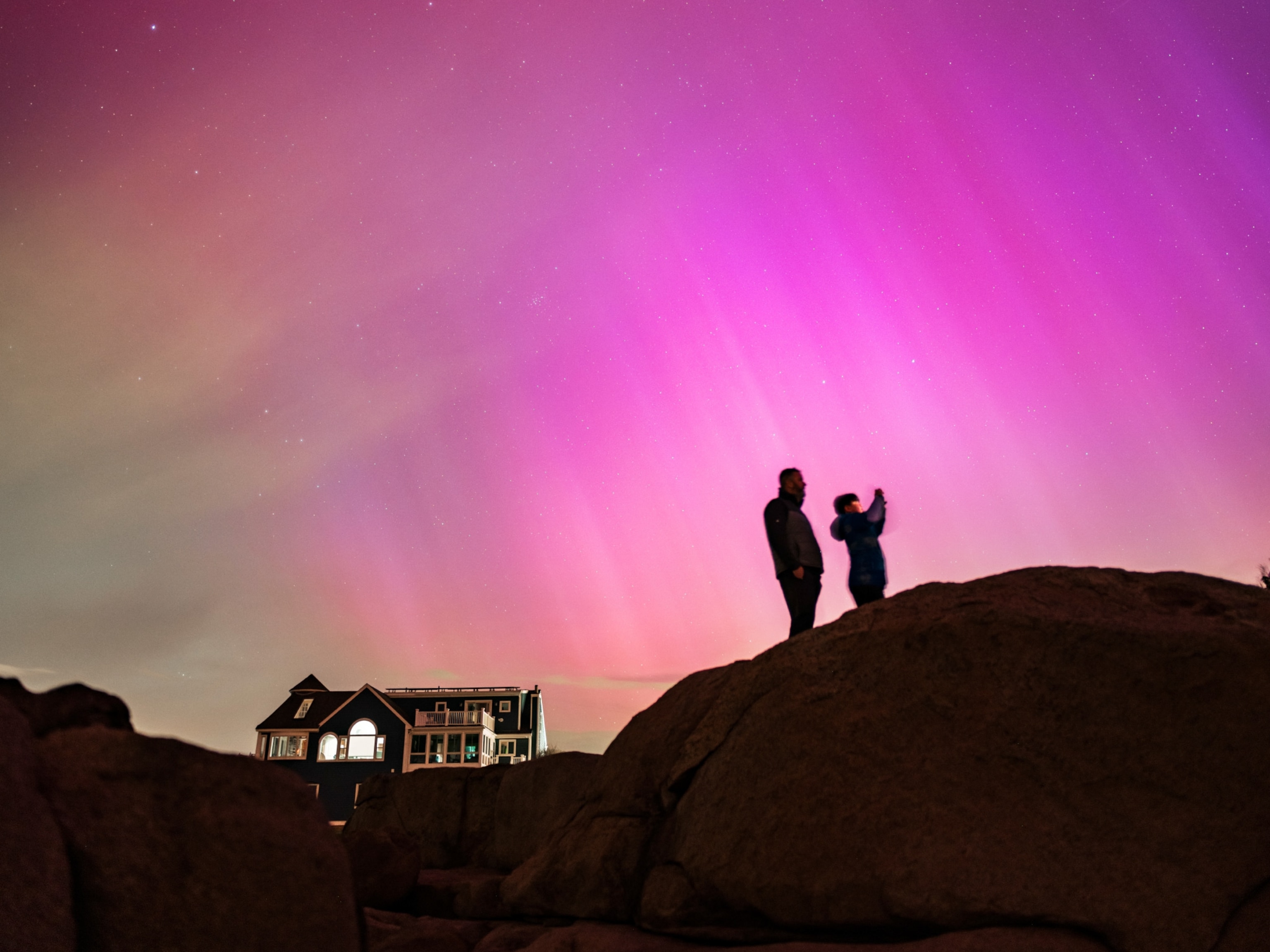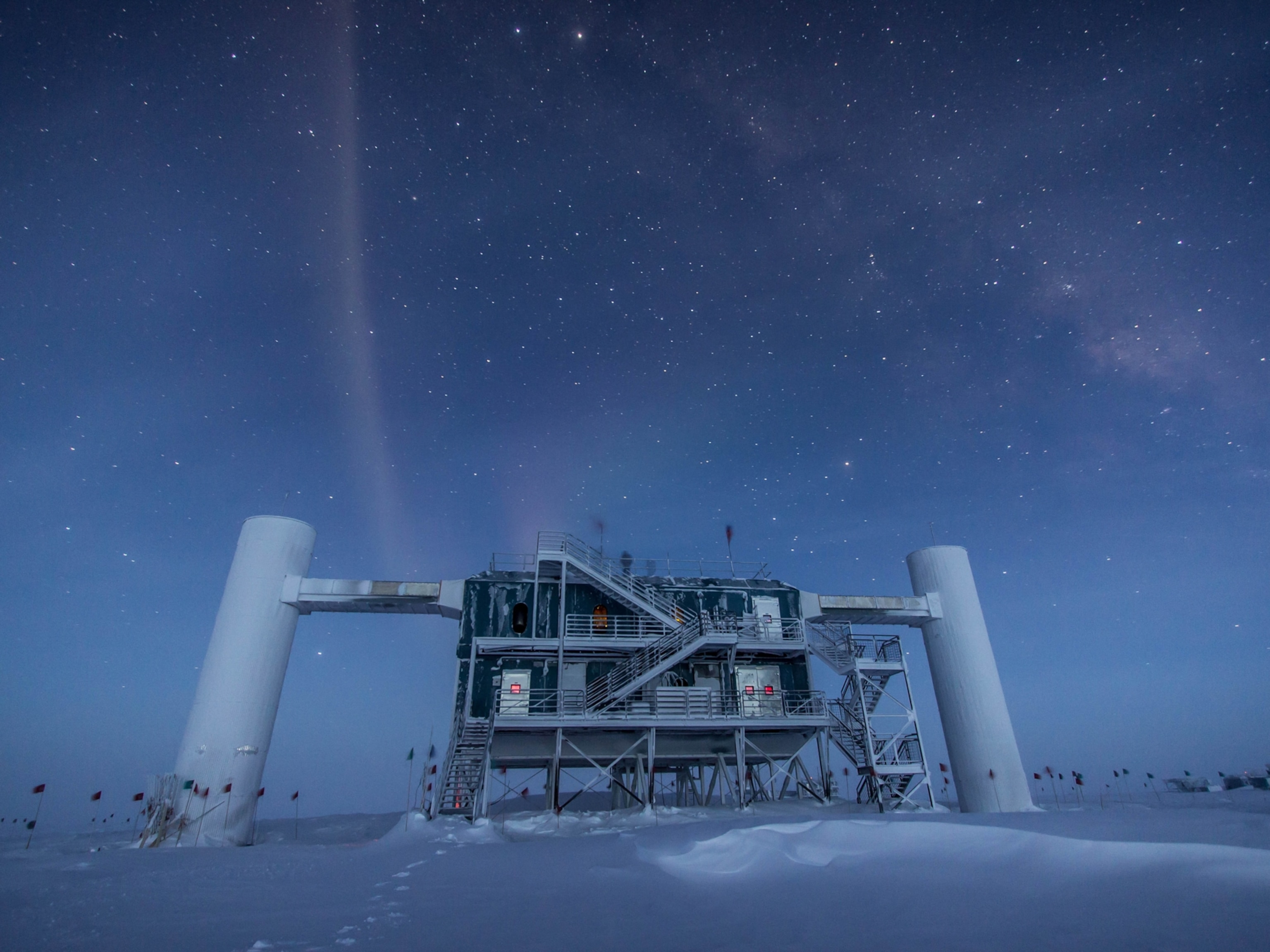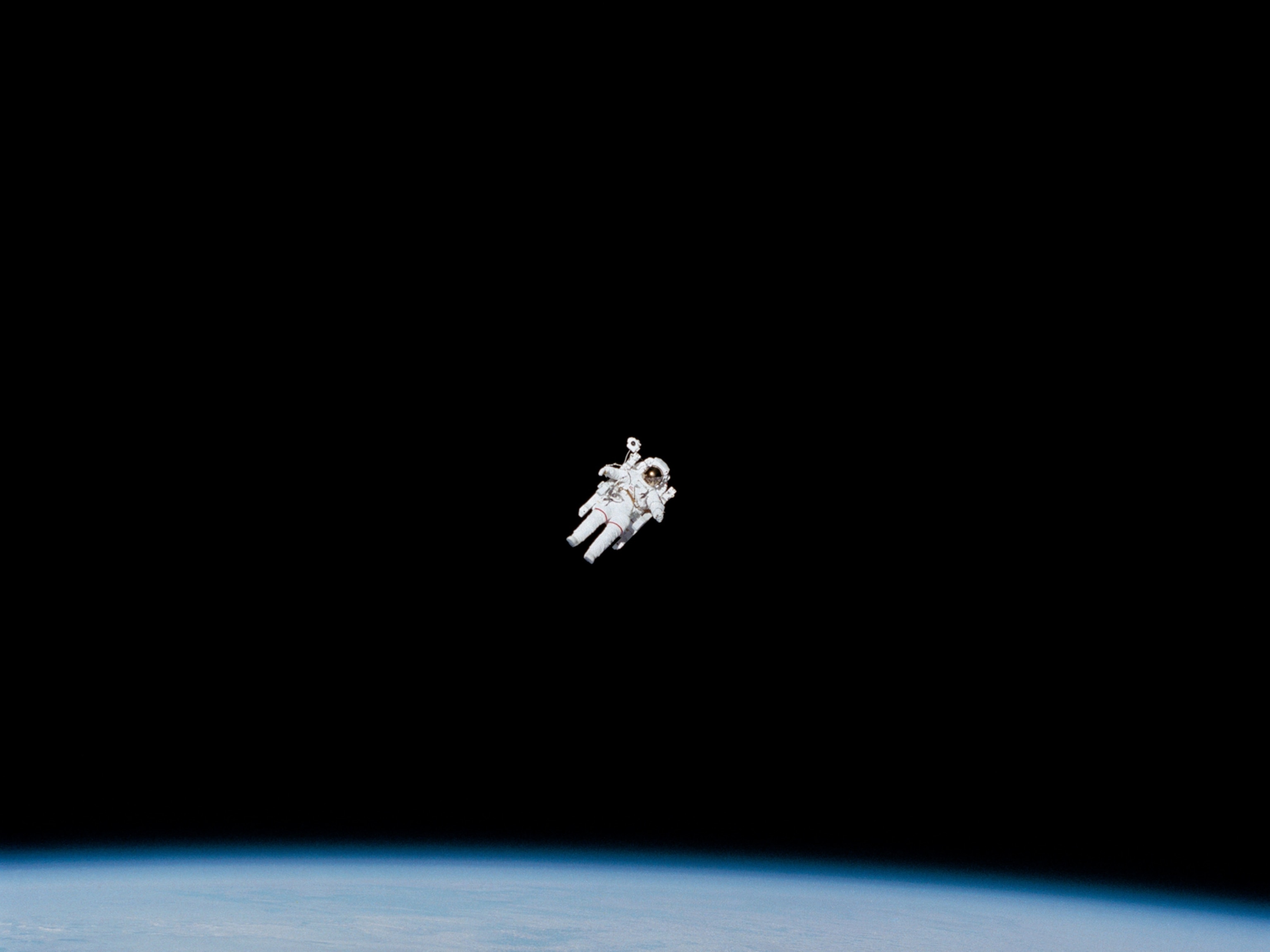See the Awesome March of the Milky Way Across the Night Sky
A photographer captures rare views of the galaxy as it spirals over southern Australia.
High overhead, the Milky Way galaxy twists itself into a whirling pinwheel, its glittering stars and dense, dark clouds weaving spirals on the sky.
At least, that’s the view photographer Christian Sasse revealed when he shared this image of the nighttime sky over southern Australia. Seen from Earth’s vantage point in one arm of the Milky Way, our galaxy appears to dive through the cosmos, its curling spine anchored to the sky by the southern celestial pole — one of the points around which the stars and all their minions appear to wander as Earth spins on its axis.
Sasse made the image he shared on Twitter from a series of 30-second-long exposures, each taken 50 minutes apart, over 10 hours on April 28. He stacked those photographs using Startrails software, and then edited the final composite image using Photoshop.
“The southern sky is fascinating in so many ways,” says Sasse, who set up his gear near one of the telescopes at Siding Spring Observatory in New South Wales. “I remember hearing the dome roaring deeply all night whenever the telescope moved from object to object.”
Based in Vancouver, Sasse had traveled to Australia to visit a friend. He rented a small camper van, decked out its interior with the gadgets he’d need to capture both wildlife and the glorious southern sky, and headed out to a spot where “the skies are pristine and you can be all on your own at night … often accompanied by curious kangaroos.”
Indeed, some of the most notable treasures in the immediate cosmic neighborhood are visible primarily in the south: Alpha Centauri, the nearest star system to our own, the bright star grouping known as the Southern Cross, a dark blotch called the Coalsack Nebula, small satellite galaxies known as the Large and Small Magellanic Clouds, and the glowing backbone of the Milky Way.
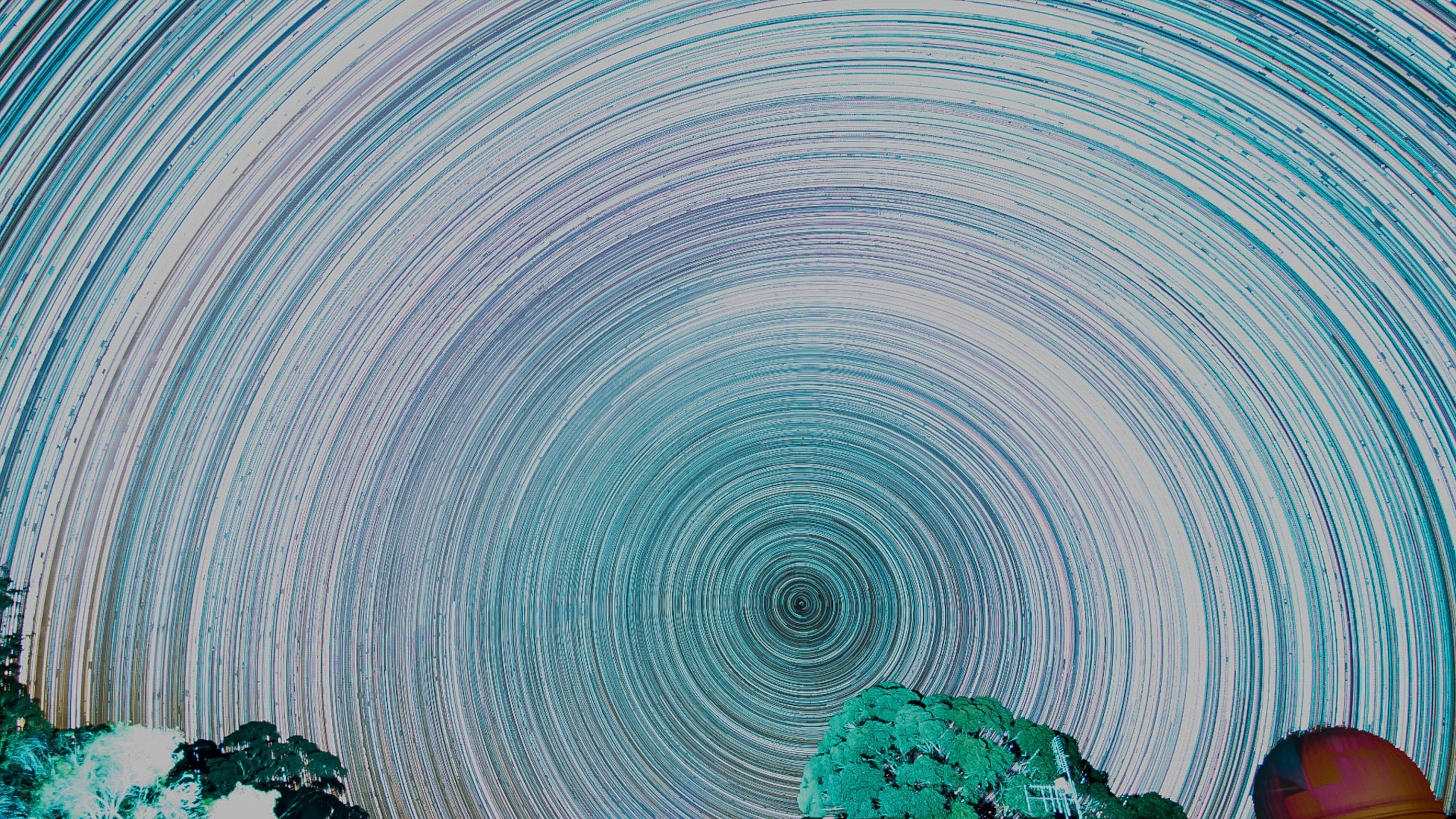
“In the Northern hemisphere, I tend to look South, and in the Southern hemisphere — well, I also look South,” says Sasse, who captured those curiosities in the great looping footprint he constructed.
Photographers often use a similar technique to create images depicting stars tracing circles around the celestial poles. Sasse initially did the same thing, stitching together roughly 1,250 images from the same night. But when he smeared the stars into circles, Sasse saw that our home galaxy had vanished, taking with it some of the most striking textures in the sky.
So he experimented with layering images taken at different intervals (see gallery), and was astounded by the result.
“What appeared were circular patterns with intrinsic beauty. Each feature of the Milky Way has its own distinct pattern, and details became finer the closer one moved to the pole,” Sasse says. “The Milky Way is creating this incredible pattern all the time, and the way we freeze it is the way we like it.“
I've been looking at the heavens all my life, and that great, milky spiral is unlike anything I’ve ever seen before — it reminds me of a galactic mandala, a demonstration of celestial geometry, an accidental fractal, a rippling kaleidoscope of stars.
“I have a fascination with light patterns in nature — iridescence of birds and fish, feather structure of eagles, anything that changes with small angles such as diffraction and reflection,” says Sasse, who has a doctorate in optics.
To me, it evokes a sense of awe and appreciation for the intricate patterns hiding in the skies, and a restless yearning to throw myself onto grass still warmed by the southern sun, snuggle in for a few hours, and stare into the twinkling tapestry that twirls overhead.
